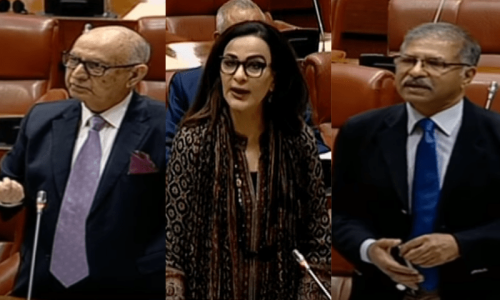Amid nascent positive economic signs in selective areas, a lag in the implementation of a few supportive initiatives by the government continues to create uncertainties among market players.
On the positive side, large-scale manufacturing (LSM) has posted 4.8 per cent growth in the first quarter (July-September) of the current fiscal year. This is driven by textile, mineral and food sectors while selective items in the construction sector have also shown positive signs. That is why the government may like to extend the amnesty scheme for construction to June 2021. Except cotton, the agriculture sector also appears to be doing good.
These are initial good signs given the last two years of overall contraction in the economy. But these are not sufficient to suggest sustainable hopes about aggregate economic growth since the majority of the items on the LSM index show negative performance. What needs to be kept in mind is that even 4.8pc growth in LSM is on a very low base.
The large industrial sector continued to shrink for two years in a row – 10.2pc in 2019-20 and 2.6pc in 2018-19 – which meant that the second largest contributor to job creation was in real trouble. Incidentally, the government had worked out the last year’s economic contraction of 0.4pc on the basis of a 7.8pc decline in LSM, which means the revised GDP number may be even worse when statistics are revised on an actual basis. Therefore, even a minor reversal in the declining trend is worth optimism.
Businesses remain confused about the actual shape of the industrial support package and look forward to a proper notification in this regard
To note a few, cement production surged over 66pc in the first quarter while the output of deep freezers and refrigerators increased 19pc and 64pc, respectively. The production of woollen and carpet yarn and woollen and worsted cloth has increased 132pc and 95pc, respectively. How these industries behave in coming months in the wake of the second wave of the pandemic has yet to be seen. Of the 15 major industries, nine have posted growth and six showed decline.
Affecting business confidence is the uncertainty about the International Monetary Fund (IMF) loan programme. The government has to deliver a clear road map on power sector and revenue reforms committed at the highest level to set its revival ahead of the next year’s budget. The Fund had a traditional stance for full-cost recovery of electricity, which meant an almost 25pc increase in rates.
An industrial support package for large, small and medium enterprises through power tariffs announced recently by the government is key to sustain some early positive signs in the industrial sector. Businesses remain confused about its actual shape until it is set in motion through a proper notification for implementation.
The package was originally proposed to be ambitious and involved over Rs350 billion over three years. But then it was rationalised to avoid completely derailing the fund programme that has practically remained in abeyance since early this year.
Under the decisions of the Economic Coordination Committee (ECC), which were endorsed by the federal cabinet, a subsidised rate of Rs8 per unit would be provided to all industries, including SMEs, involving an estimated subsidy of about Rs7bn for K-Electric consumers and Rs15bn for the rest of the country in the remaining eight months of the current fiscal year.
This could go up to Rs25bn depending on its better-than-expected success. The Power Division and power regulator are finalising legal and procedural requirements before issuing a formal notification hopefully this week.
The decision entails that a discount of Rs4.96 per unit would be offered from the incremental marginal rate of Rs12.96 per kWh for industrial consumer categories (B1, B2 and B3) from Nov 1 to June 30, 2021 for off-peak hours on an incremental consumption basis over their consumption in the corresponding months of the period from March 2019 to February 2020. The reference period would be adjusted by the Power Division and regulator to exclude Covid-19 months.
In this case, an estimated subsidy requirement will be approximately Rs15bn, which will be provided out of the rolled-over Covid-19 economic stimulus package from last the fiscal year on an actual consumption basis for each month.
Second, the rate of Rs12.96 per unit will be to industrial consumer categories (B1, B2 and B3) from July 1, 2021 to Oct 31, 2023 for off-peak hours on an incremental consumption basis over their consumption in the corresponding months of the period from March 2019 to February 2020. In this case, there is no subsidy requirement since Rs12.96 is the marginal cost of generation.
Third, the rate of Rs12.96 per unit will also be charged for industrial consumer category B4 from Nov 1, 2020 to Oct 31, 2023 for off-peak hours on an incremental consumption basis over their consumption in the corresponding months of the period from March 2019 to February 2020. In this case, there is again no subsidy requirement.
Also, new industrial consumers having no reference consumption available in the period from March 2019 to February 2020 will be offered the same package through a slab-wise consumption structure.
The same package is applicable to KE consumers. It envisages a Rs7bn subsidy. The finance ministry will release funds monthly. A decision for extending this package for these consumers will be taken in June 2021.
The subsidy amount will be reconciled every month on an actual incremental cost and base tariff by the power and finance divisions. The government is finalising guidelines to be issued to the power regulator for the incorporation of the proposed package in the regulatory framework. After its incorporation in revenue requirements, the notification of the proposed package in the official gazette will be issued by the Power Division, most probably within this week, that will clear uncertainty among industry players.
Published in Dawn, The Business and Finance Weekly, November 16th, 2020















































